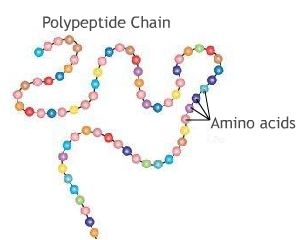
I first heard about Irena Cosic’s Resonant Recognition Model (RRM) in 2007, from the Institute for Science in Society’s article “The Real Bioinformatics Revolution.” Since my Master’s degrees were in digital signal processing for music and audio, I am quite familiar with using the Fourier Transform (FT) to calculate the frequency spectrum from the time domain (think of an audio equalizer with bass, mids, and treble). What blew my mind about the RRM was that the FT could be used to calculate spatial frequencies! 🤯 I immediately sought out her thesis and purchased it as a tiny hardcover book, which still has a proud place in my collection.
The theory was inspired by the question of “how do biological molecules find their docking sites when bouncing around randomly in an ocean of liquid?” In the Newtonian view, receptor-ligand binding is modeled after a lock and key. But on the atomic level, things are mostly made of space and never actually touch; it’s just energy exchange on a quantum level. What Cosic’s model proposes is that molecular interactions occur through resonance, where molecules are drawn to their binding sites by their matching frequency and opposite phase.
The Discrete FT is calculated using arrays of numerical values. One could think of a digital audio waveform as a series of beads on a string, evenly spaced together to describe the shape of a sound wave. The brilliant idea that Prof. Cosic had was to model DNA strands like beads on a necklace, where each “bead” represents the electrical charge due to valence electrons. The same approximation can also be applied to proteins, as chains of amino acids.
It turns out that indeed, there is a significant correlation between the frequency spectra of proteins and their biological activity – that is, similarly-functioning proteins have common frequencies across different species with different amino acid sequences! The RRM has been empirically verified on dozens of receptor-ligand interactions, and more recently it has been extended to work with interactions between proteins and small molecules.1 It has also been projected to work not just with visible light, but also with microwave frequencies. Cosic has also done some cool things by extending time-frequency analysis methods for space-frequency analysis to investigate exactly which parts of proteins are the most important for the functionally active frequency.
Some applications of the RRM include speeding up calculations on massive collections of DNA sequences, by sorting for functional homology based on common frequencies. It can also potentially help discover new drugs, by sorting through candidates based on functional frequencies. Recently, Cosic’s lab has been using the RRM to investigate the dynamics of COVID protein binding.2,3,4,5 They demonstrated mathematically that the COVID spike protein binds not only with ACE2 receptors, but also likely with red blood cells.6
In her own words:
The RRM … can be applied for design of de novo bioactive peptides with desired biological function or to influence biological functions with either electromagnetic radiation of specific frequency (wavelength) or with conductive elements like titanium salt or nanophotonic particles. All these RRM applications can be used in pharmacology, drug design, treatment of diseases, agriculture or even in electronics. The RRM approach is completely changing the paradigm of understanding the specificity of macromolecular activity and interactions, and as such is opening completely new future horizons for science.7
Over the years I have been working on a library of matlab and ruby code to perform the calculations of the RRM. The equations are relatively simple, thanks to Prof. Cosic’s hard work. It just requires a lot of table lookups, which are made quite easy with ruby hashes. I plan to publish it as an Open Source library on GitHub soon, so other people can play with this tool. I am also interested in exploring alternative transforms to the FT, such as Melkonian’s Similar Basis Function.8
Prof. Cosic and her husband Drasko have a consulting website which can be found here: https://www.amalnaconsulting.com
-
Cosic et al. (2020). New Concept of Small Molecules Interaction with Proteins – An Application to Potential COVID-19 Drugs. ↩︎
-
Cosic et al. (2021). Analysis of Omicron SARS-CoV-2 Variant Using Resonant Recognition Model. ↩︎
-
Cosic (2021). Analysis of Ivermectin as Potential Inhibitor of SARS-CoV-2 Using Resonant Recognition Model. ↩︎
-
Cosic (2021). Analysis of Delta (Indian) Variant of SARS-CoV-2 Infectivity using Resonant Recognition Model. ↩︎
-
Cosic (2021). Possibility to Interfere with Coronavirus RNA Replication Analyzed by Resonant Recognition Model ↩︎
-
Cosic et al. (2020). RRM Prediction of Erythrocyte Band3 Protein as Alternative Receptor for SARS-CoV-2 Virus" ↩︎
-
Cosic & Cosic (2021). Macromolecular Resonances. In: Bandyopadhyay & Ray (Eds) Rhythmic Oscillations in Proteins to Human Cognition. Studies in Rhythm Engineering. ↩︎
-
Melkonian (2010). Similar basis function algorithm for numerical estimation of Fourier integrals. ↩︎